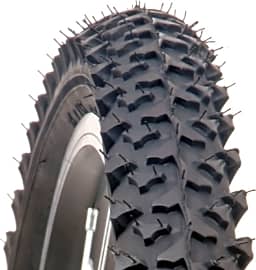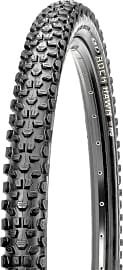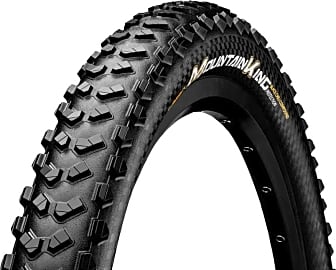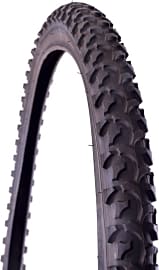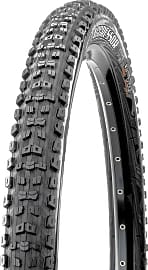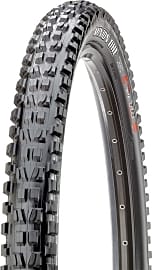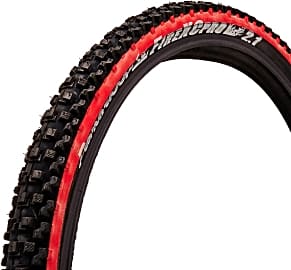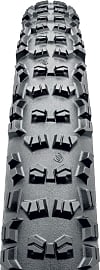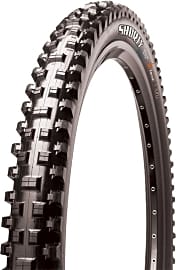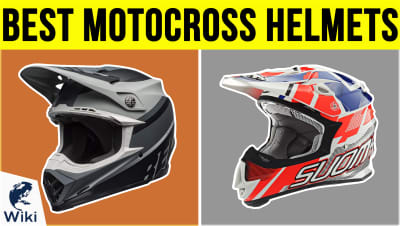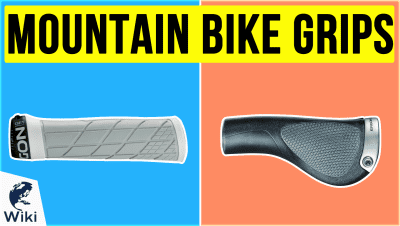The 10 Best Mountain Bike Tires

This wiki has been updated 39 times since it was first published in February of 2017. If you own a mountain bike, having the proper tires can make a significant difference to your enjoyment and performance. The models we have selected offer a variety of treads and features that will enable you to navigate off-road terrain with confidence and allow you to make quick work of sand, rocks, mud and any other obstacles you are likely to encounter along the way. When users buy our independently chosen editorial picks, we may earn commissions to help fund the Wiki.
Editor's Notes
June 17, 2020:
While some of the items in this list from prior to the update were fine, in order to reflect the market a little better, I felt that I had to remove a few of the older entries and those with smaller treads that weren’t really appropriate, like the Schwinn Street Comfort, and introduce some newer options that had more aggressive treads for heavier, professional-level mountain biking.
Many of the new tires I’ve introduced are labeled as tubeless, though in reality, most tires with high TPI's (Treads Per Inch) can be converted into tubeless tires, which is the way to go nowadays. There are a few good brands, but Maxxis is perhaps the leader of the lot, and the company makes a plethora of good options for mountain bikes. In order to reflect this, I’ve replaced some of the older models from lesser brands with two new models from the company.
The Maxxis Minion DHF is really a front-wheel model. It can be used on rear ends too, depending on the kind of terrain you want to tackle, but you may want to pair it with a rear-wheel model with a less open tread that offers better rolling resistance. The ‘DHF’ stands for ‘Down-Hill Freeride’ and that’s what Maxxis has marketed the tire as on their page, but its tread lends itself well to any sort of wet and muddy environment This model isn’t really ideal for hardpack terrain though.
The Maxxis Ardent which is a great all-around model was already in this list, and I initially thought of replacing it with the Maxxis Ardent Race – a model which is still suitable for all types of dry terrain, but has a slightly narrower and more streamlined tread that prioritizes speed over grip - however, I decided against it for a couple of reasons that led me to believe that the Ardent is just a better overall tire for mountain bikes, including the fact that the Ardent Race uses 3C (Triple Compound), not more durable 2C (Dual Compound). A balanced setup though would be to use the Ardent on the rear wheel and the Ardent Race on the front wheel.
I slightly favor Continental models as all-round options and Maxxis tires as more specialized options, so I’ve introduced the Continental Mountain King as an addition to the Continental Trail King that was already in the list. I’ve also added the Maxxis Aggressor as a nice rear-wheel option for more technical courses with medium and looser terrain, but it’s not going to fare too well in wetter and muddier areas.
As a last minute change, I also swapped out the Maxxis Ignitor for the Maxxis Shorty. I wasn't initially planning to do this as the Ignitor is an excellent tire with no issues, but it was struggling with availability issues, and I realized that it wasn't on the company's current catalog, which means that they've probably stopped manufacturing it. I would only still recommend such a tyre if it was particularly unique, and I didn't feel that to be the case with the Ignitor, so I've found a suitable and very similar replacement in the Shorty.
Mountain Biking: An Multidisciplinary Sport
Cross-country mountain biking involves biking for extended periods of time via off-road trails.
Mountain biking, as its name entails, is a sport in which practitioners ride bicycles off-road and across rugged terrain. That differentiates it from regular cycling, which usually takes place on pavement. But just as there are different ways to ride on pavement — there's road racing, track riding, and BMX, to name a few — so, too, are there different methods for riding off-road. Before you go out and buy a new set of mountain bike tires, therefore, it's important to understand the differences between the sport's individual disciplines.
One of the most common types of mountain biking is cross-country. If you're a newcomer to the sport, you'll probably begin with this style. Cross-country mountain biking involves biking for extended periods of time via off-road trails. The state of those trails may vary within a single ride, from nicely groomed sections to hairy areas of mud and gravel, but they usually won't feature major obstacles. So, while this kind of riding demands decent levels of endurance and control, it doesn't necessarily require any expert skills or overly specialized equipment.
All-mountain biking is another popular discipline. It's more challenging than cross-country, as it involves traversing truly rugged and unpredictable terrain. This terrain can be anywhere from moderately to extremely difficult to maneuver through, as it features steep inclines, declines, and other obstacles that occur naturally on mountain slopes. Because of all that, it requires a lot more focus and skill than cross-country biking, as well as more advanced gear, such as higher-tech suspension systems on the bike itself.
For a real rush of adrenaline, many riders turn to downhill racing. As its name suggests, this style of riding entails cycling down mountain slopes at high speeds, often on groomed trails, but also on rough ones. It's usually undertaken competitively, with the goal being to reach the bottom as fast as possible. Naturally, that demands serious control and focus, so it's not a discipline that should be tried without extensive practice.
Finally, dirt jumping involves jumping and racing across dirt tracks. These tracks are specifically groomed for the purpose, with large ramps and bumps intended to send a rider airborne when traveled over at high enough speeds. This discipline is also often undertaken competitively, and riders are judged on how much air they can get and how many tricks they can pull while racing around the track.
Getting The Right Set Of Tires
Recognizing which of style of mountain biking you'll be practicing is an essential prerequisite to investing in equipment. Bikes themselves are specially designed to excel at one or another discipline, with all-mountain and downhill cycles featuring larger shocks and wheels for absorbing imperfections in the trails, and dirt jumping models generally having a smaller frame for maneuvering in the air.
But aside from those aspects, tires can also have a significant impact on bike performance. They are, after all, the main point of contact between you and the ground, so if you're trying to optimize your rig's speed and traction, they're the first place to start.
Large, widely-spaced lugs generally bite into soft soil better and channel muck out and away more effectively.
Size is one of the most important considerations when shopping for a new set of tires. You'll want to make sure that whatever you buy actually fits your wheels, which can vary depending on what kind of bike you have and what style of riding you're doing. Specifically, the tires' diameters will have to match that of your wheels. But in terms of width, your tires should be wider the further you move away from basic cross-country riding. Wider tires, though heavier, generally offer more traction and absorb bumps better than thinner ones.
Tread is another crucial factor to think about. All-mountain bike tires feature knobs — also known as lugs — across their exteriors, which help them grip dirt and increase traction and speed. But the design and placement of those lugs can vary wildly from one set to another. Large, widely-spaced lugs generally bite into soft soil better and channel muck out and away more effectively. Small, closely-spaced lugs, on the other hand, offer less grip, but also limit ground resistance, which in turn increases speed. Many tire brands will specify the terrain for which the tread is intended on their packaging.
The expected durability of the tires should also be assessed. More expensive tires will have a more high-tech blend of rubber compounds, which can increase both performance and longevity. Furthermore, some tires can be installed and ridden without tubes, making them easier to replace or plug in the event of a flat.
Safety First
No matter what kind of mountain biking you're doing, remember that it is a highly physical activity, and that accidents can and do occur out on the trail. It's important, then, to also do everything you can to ensure your safety. This is true for all forms of cycling, but it's particularly relevant to mountain biking — every rock, tree, and other obstacle you'll be traversing poses an additional threat.
It goes without saying that you should always be wearing a helmet while biking. Whether you're out for a casual pedal or bombing down a dirt path in the woods, keeping your head protected can literally mean the difference between life and death. Many riders opt for dirt bike-style helmets, which include visors and near-full-face protection. Goggles are another good idea, since the large tread on mountain bike tires can easily kick up rocks and debris.
Aside from protective wear, try to stay connected while out on the trail. Because mountain biking can involve traveling into isolated wilderness areas, it's important to make sure you have a way to call for help in the event of an accident. For example, you may consider investing in a personal GPS, or even a locator beacon.


